How to Make Dashi (Japanese Soup Stock)
Known for its savory umami taste, dashi is a Japanese soup stock that is rich and full of flavor. You’ll be surprised by how easy it is to make –– requiring only 3 ingredients and 20 minutes to prepare!
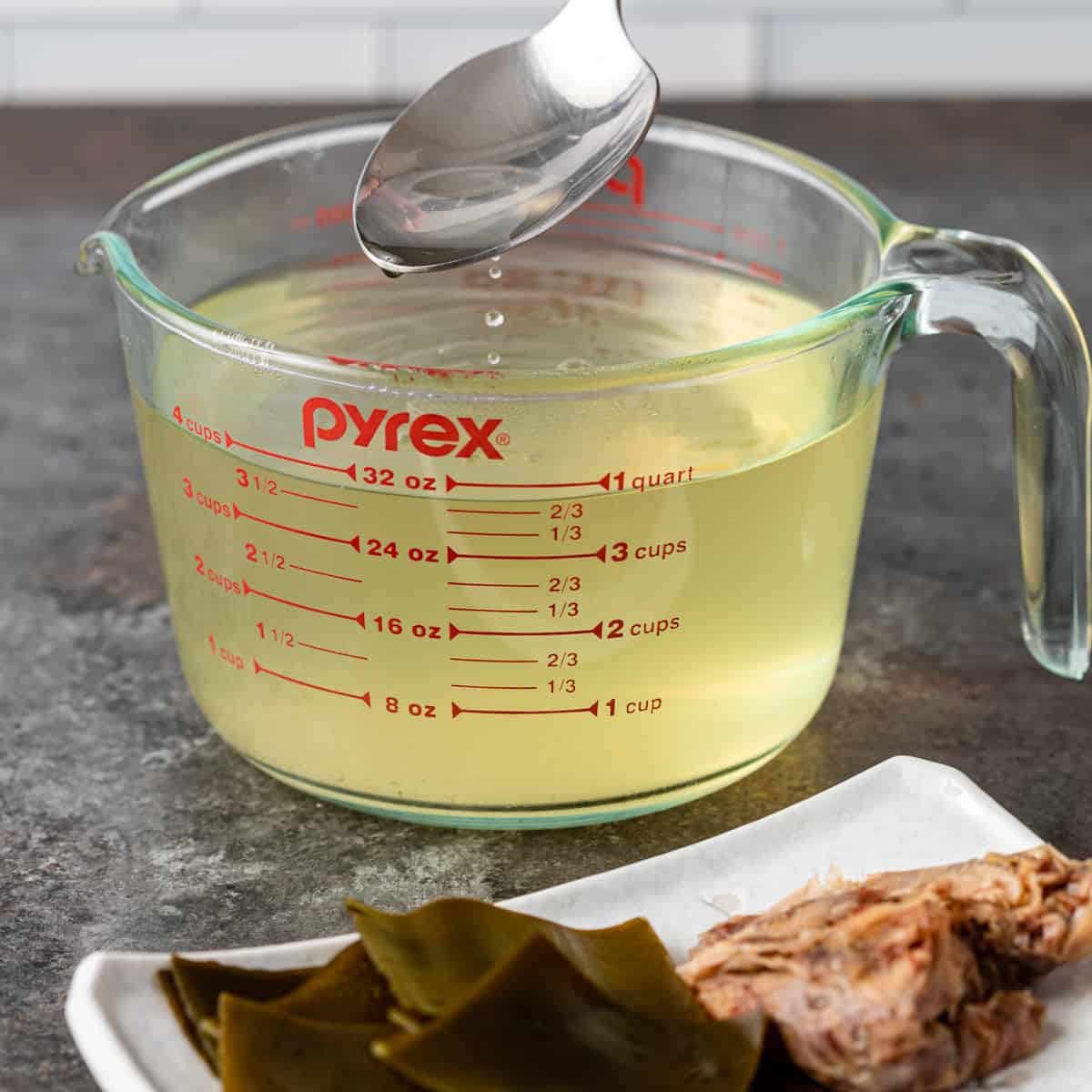
With the help of dashi, you can cook up a variety of incredible Japanese meals. Dashi stock is a staple in Japanese cooking, and it’s not only delicious, but also so easy to make at home too! This soup stock has a delicious umami flavor that comes from the high levels of glutamate in its ingredients.
Dried kelp kombu and bonito flakes (smoked tuna) give this soup stock its distinct flavor. The best place to find these ingredients is in an Asian grocery store. Other stores may also carry it in their Asian section or you can buy them online.
My favorite way to use dashi stock is in miso soup or ramen. Pair either of these soups with this tangy Ahi Tuna Salad or Japanese Beef Curry, and you’ll have a complete meal that will fill you up and satisfy your taste buds! Finish off your meal with some Japanese Jiggly Cheesecake to balance out savory flavors with some sweetness.
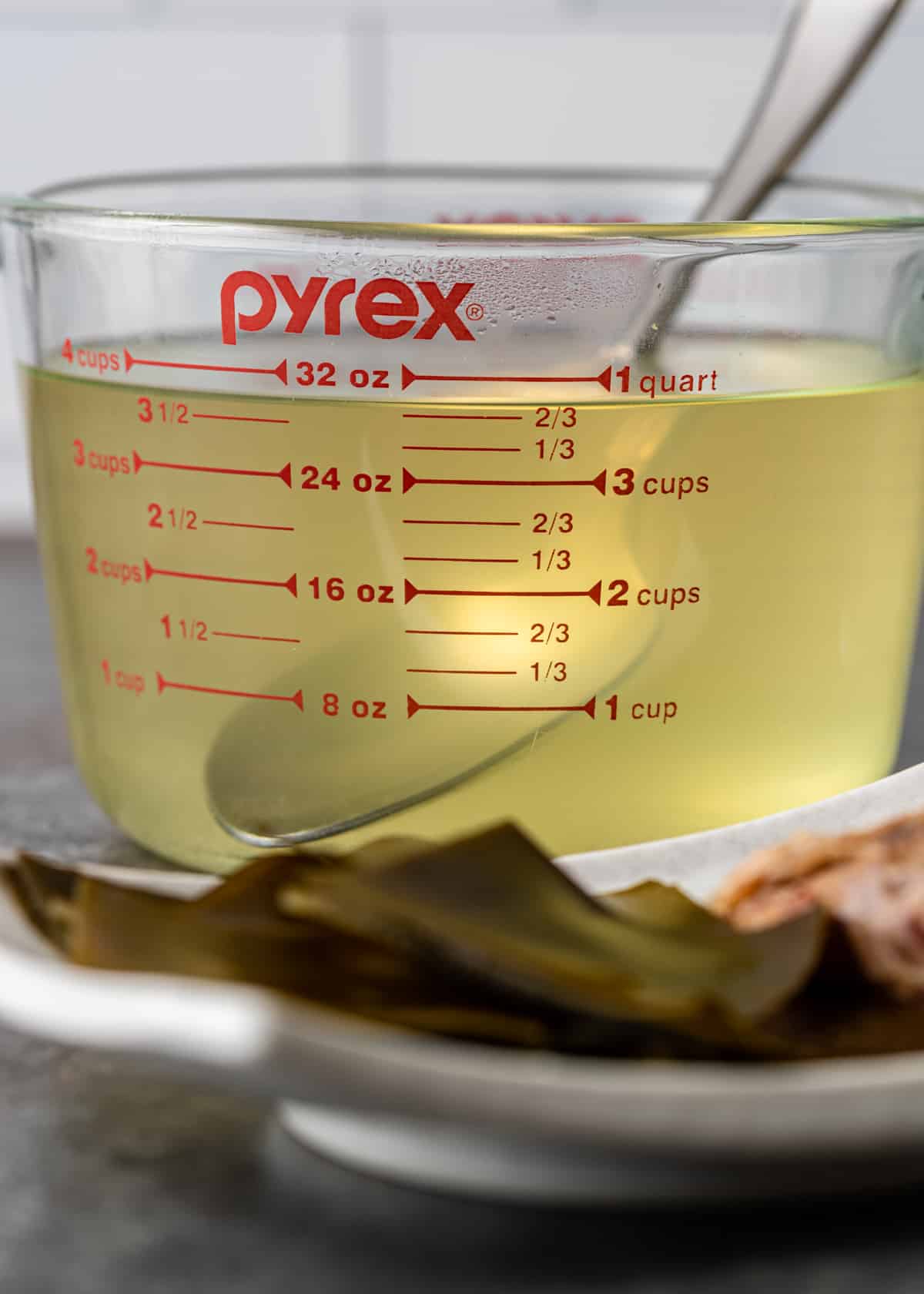
INGREDIENT NOTES AND SUBSTITUTIONS
- Dried Kelp Kombu – This dried seaweed product is the key ingredient in this recipe. It doesn’t taste fishy, but rather has an earthy mushroom-like flavor.
- Dried Bonito Flakes – Also known as katsuobushi, these dried fish filet flakes come from smoked skipjack tuna and have undergone a process of simmering, smoking, and fermenting. The result is an incredible salty, savory flavor.
- Water – Start with 4½ cups of water. Since some of the water will evaporate as the liquid boils, this amount will leave you with approximately 4 cups of soup stock in the end.
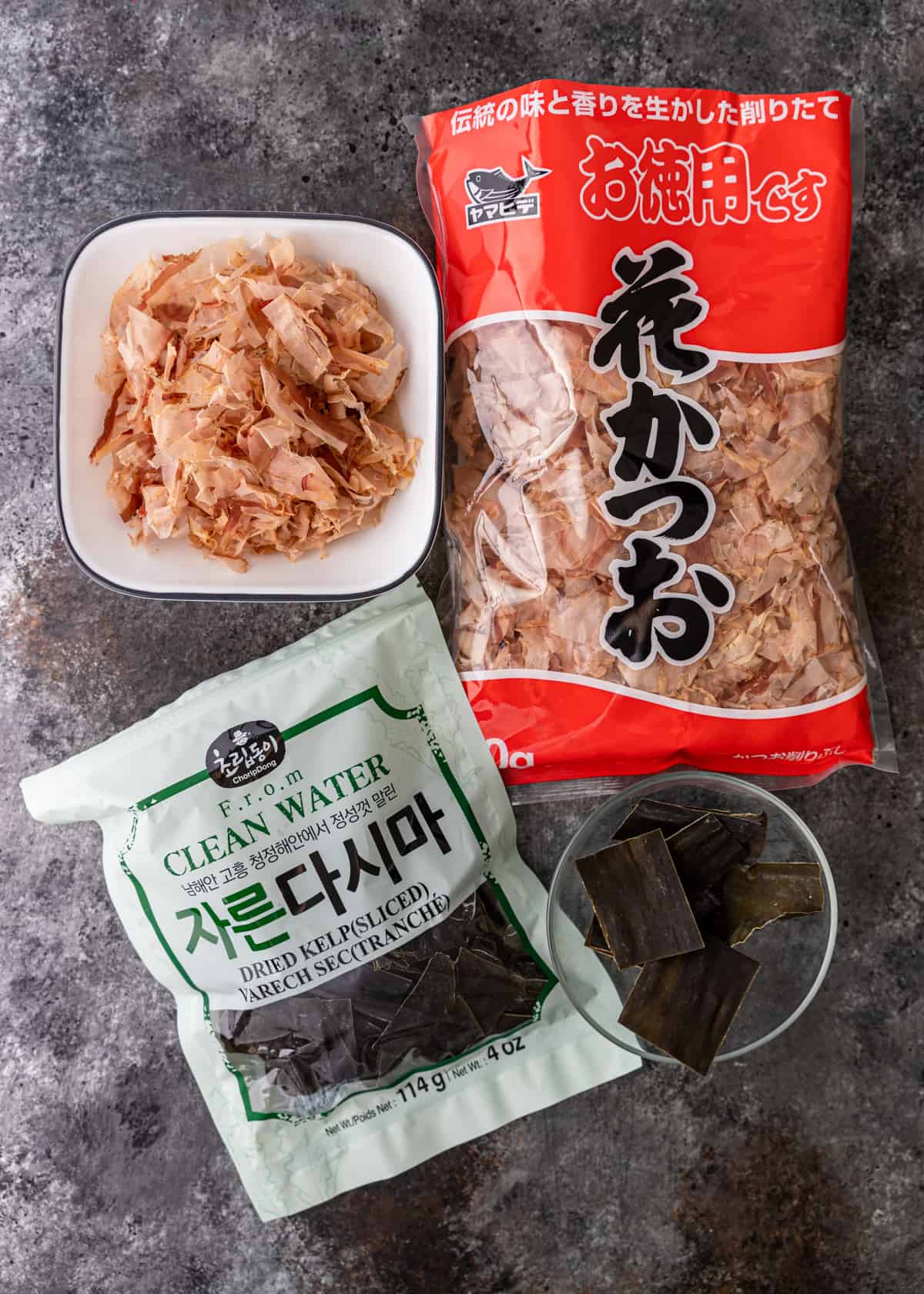
HOW TO MAKE DASHI
- Break Kombu Into Pieces. Cut or break kombu so that it’s easy to add to the water.
- Heat Water & Kombu. Over medium heat, bring the water and kombu to almost a boil, skimming foam as needed. Once you start to see bubbles, turn off the heat and remove the kombu with tongs. You can either discard the kombu or save it for other use.
- Add Dried Bonito Flakes. Stir in the katsuobushi and bring to a boil.
- Let steep. After reaching a boil, remove your dashi from the stove and let it steep for 10 minutes to allow the flavor to deepen.
- Strain Carefully. Pour the soup stock into a fine-mesh sieve over a large bowl. Be sure to press the wet bonito flakes to extract as much liquid as possible. Similar to the kombu, the extra katsuobushi can be saved for later or discarded.
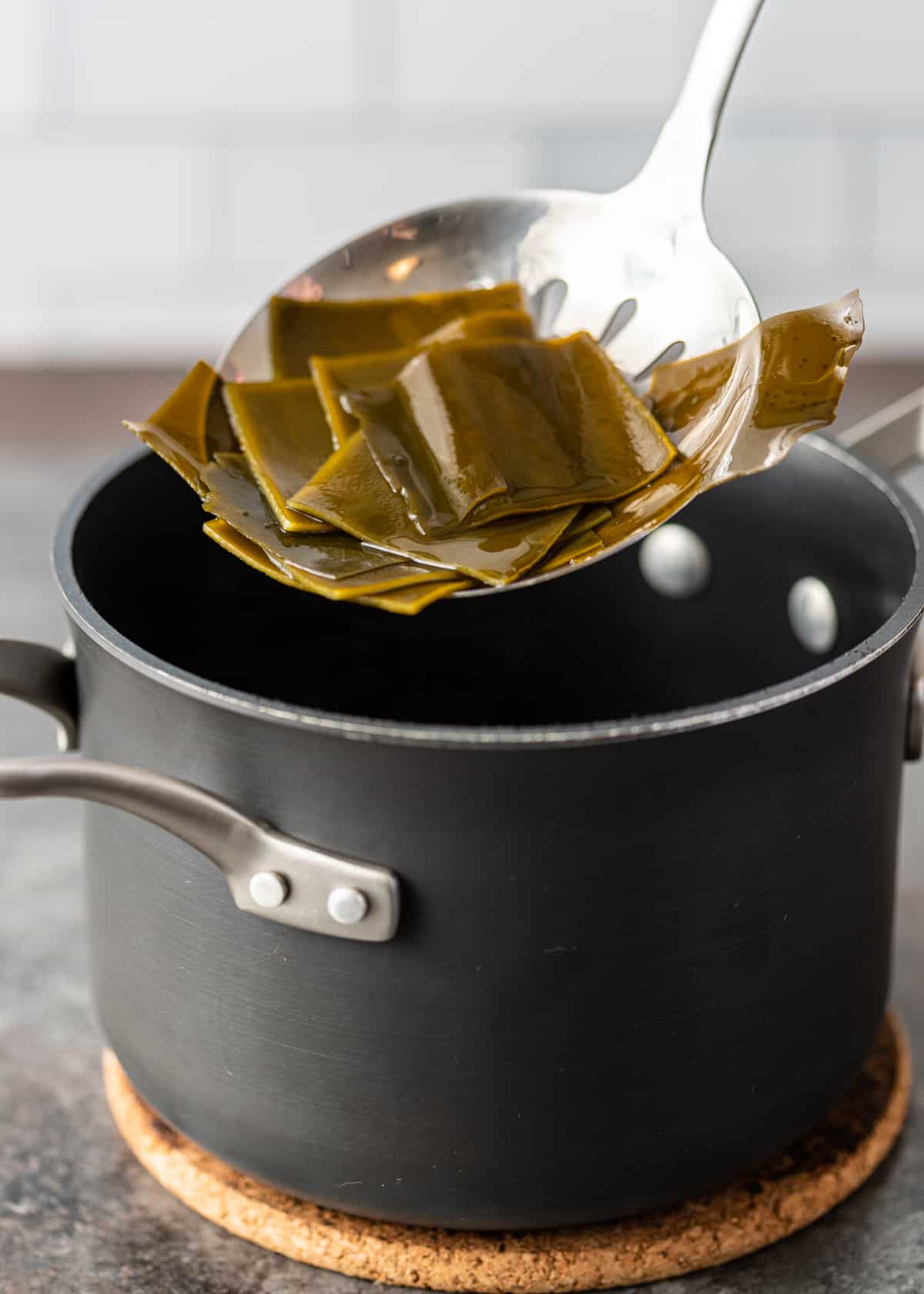
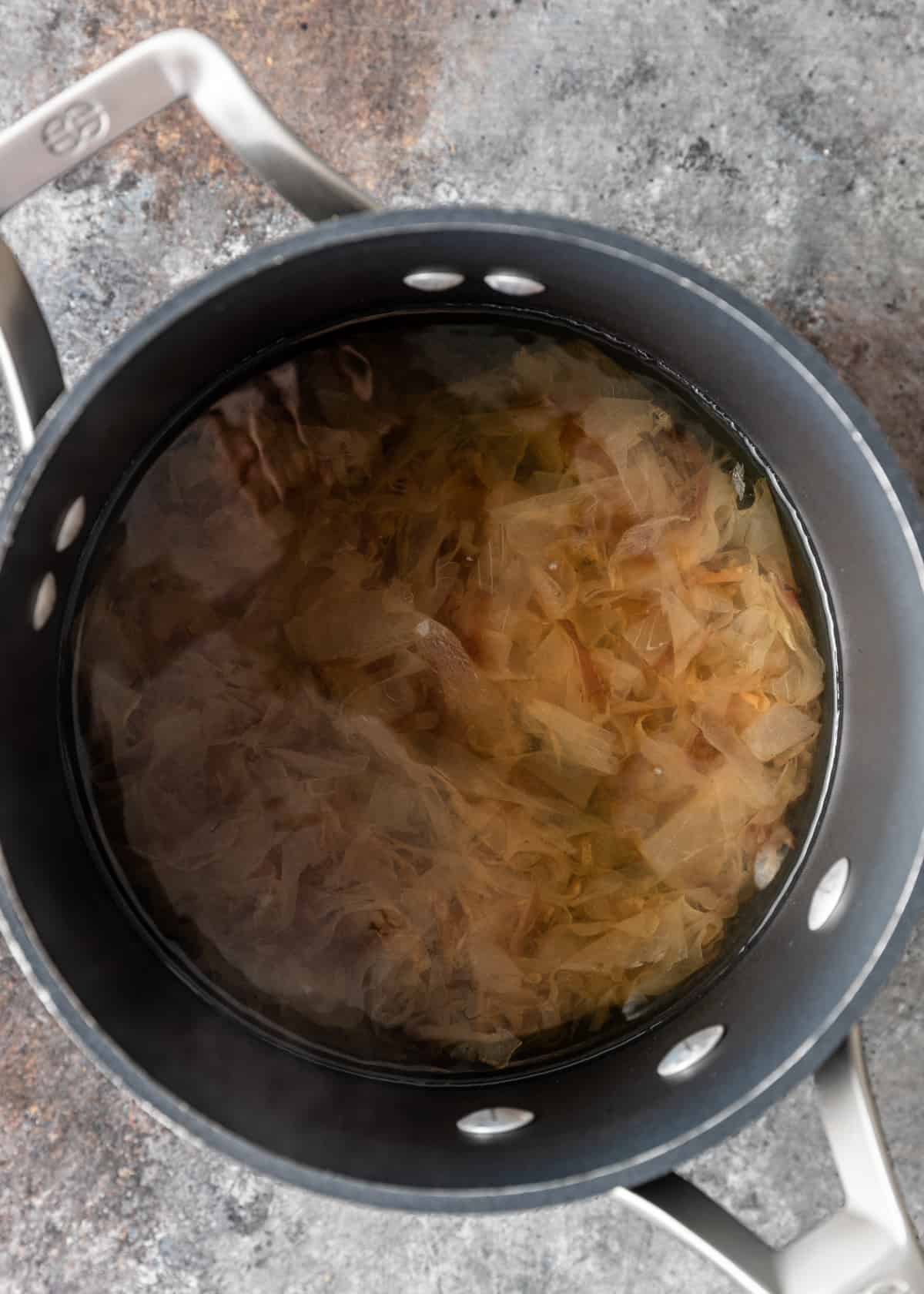
How long can you keep dashi stock?
Dashi is freshest and tastes best on the day that it’s made, but it can be stored in the refrigerator for up to 5 days. It can also be frozen for up to 2 weeks. For best results, be sure to let it cool fully and cover it before storing.
Since this Japanese soup stock can last multiple days, it’s perfect for preparing ahead of time and can be used to cook multiple meals throughout the week.
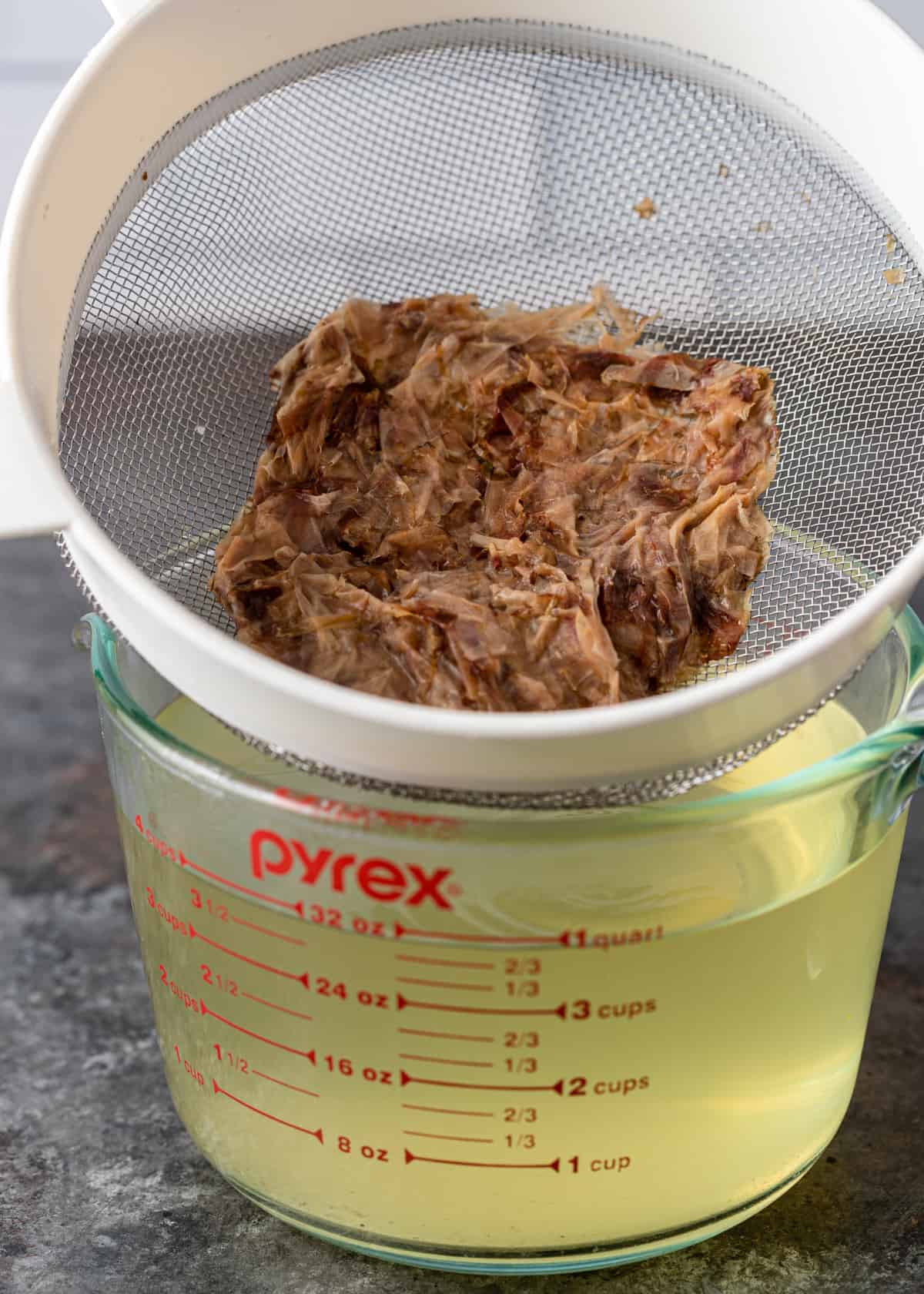
Is dashi the same as miso?
While both miso and dashi are popular in Japanese cuisine and are known to have a savory flavor, they are two different ingredients.
Miso is a paste made from soybeans and a safe-to-eat fungus called koji, whereas dashi is soup stock made from dried kelp and fish flakes. Miso is thought to be the saltier of the two.
Despite their differences, these two items taste delicious together, and most miso soup recipes actually include dashi stock as an ingredient! My Miso Soup recipe is coming soon!
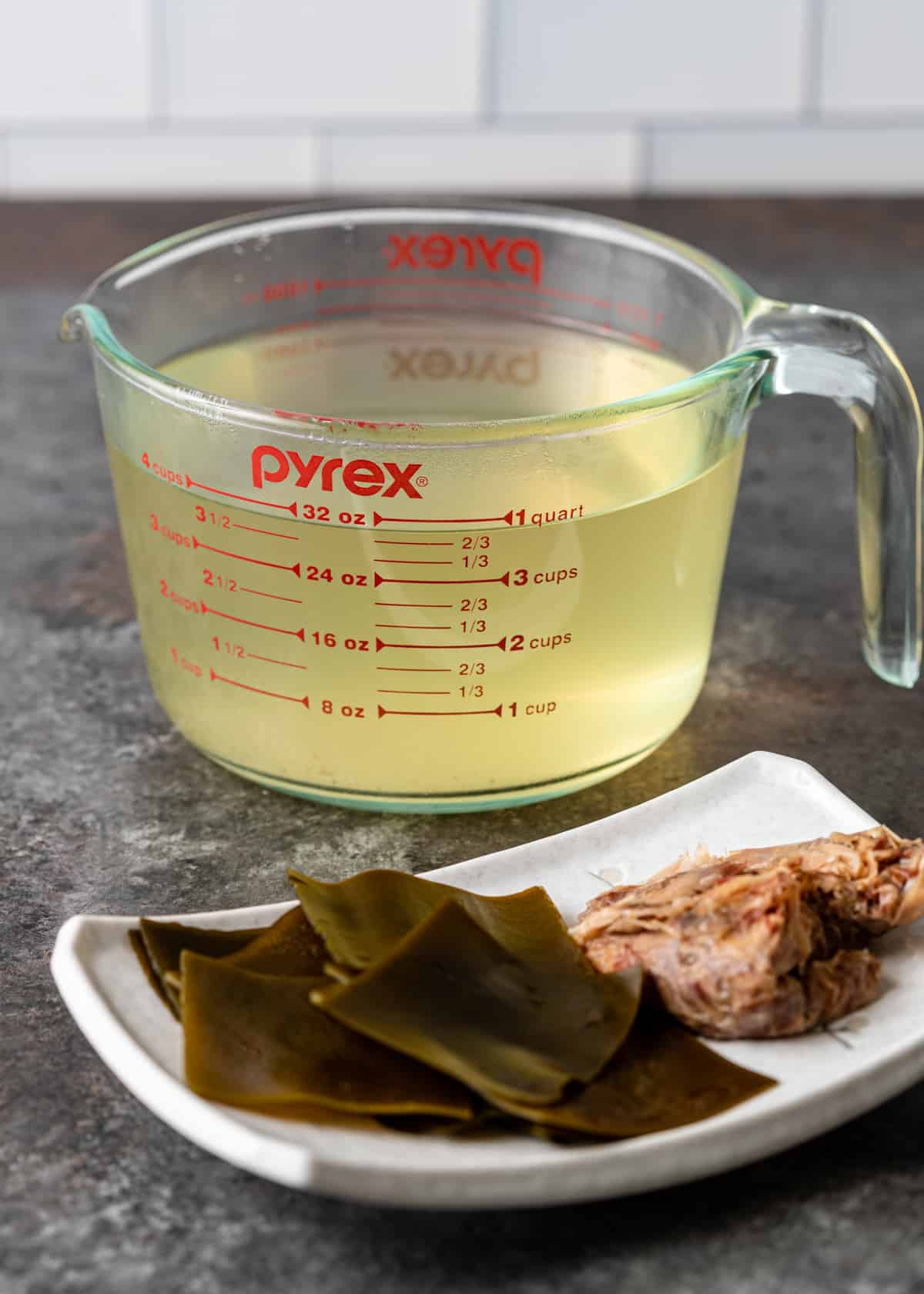
What can I do with dashi?
This Japanese soup stock is incredibly versatile, so there are many different ways that you can incorporate it into your cooking to enjoy all of its flavor.
It can be a substitute for chicken broth and works great in seafood stews, soups or sauces. Vegetarians and vegans can use a kombu dashi to make a more savory vegetable stock, adding fresh or dried mushrooms.
In addition to being used for soups, it is also delicious when used to make dipping sauces for appetizers such as tempura. Another great way to use dashi is to cook vegetables, fish, or meat in it!
What types of dashi varieties exist?
There are several different varieties, with different ingredients producing distinct flavors. Our recipe here is one of the most popular types: an awase dashi, made from dried bonito flakes and kelp kombu.
Other Japanese soup stock varieties are made from ingredients such as mushrooms or dried anchovies.
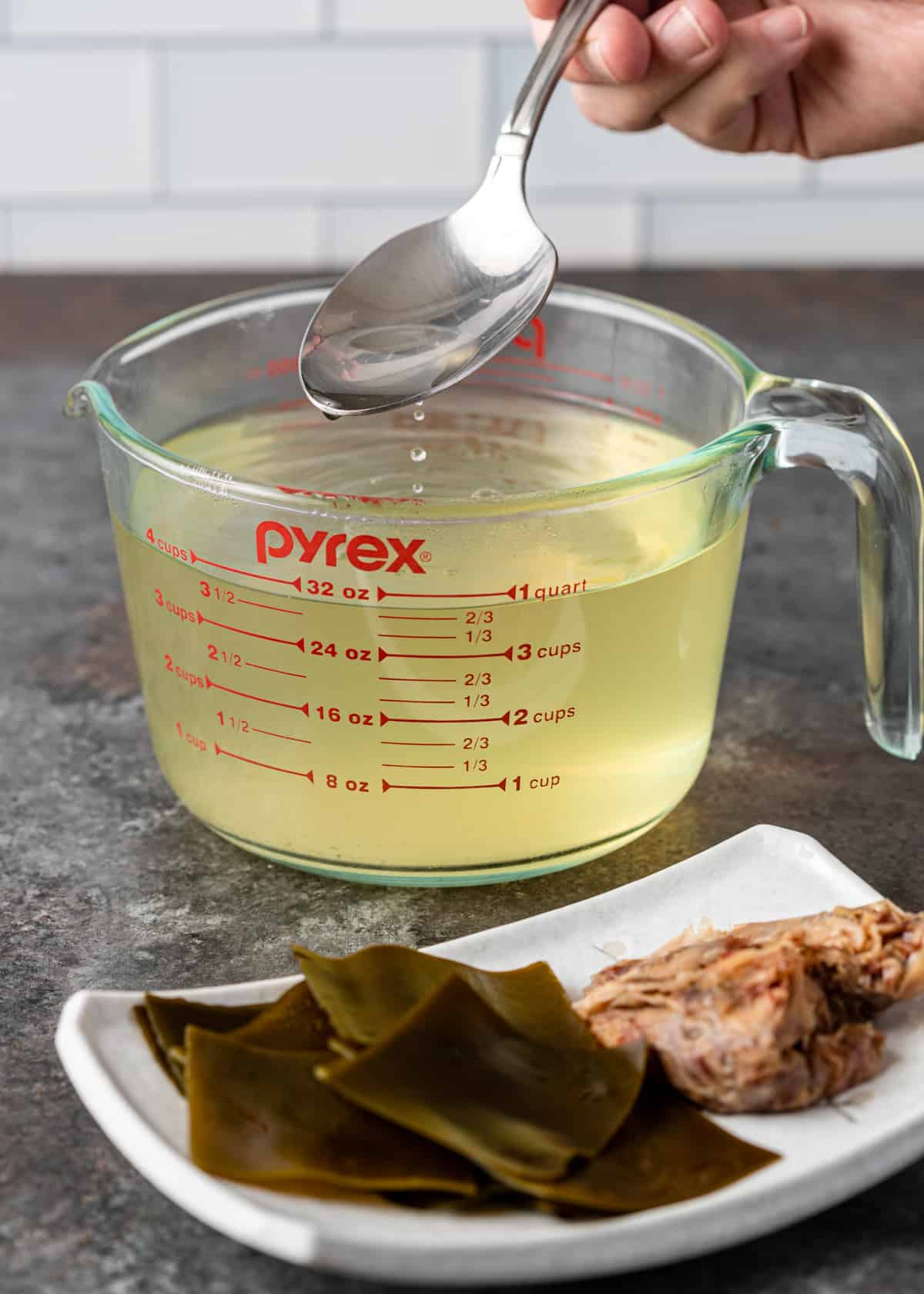
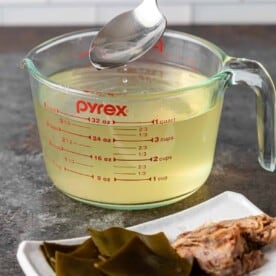
How to Make Dashi (Japanese Soup Stock)
Ingredients
- 10 g dried kelp kombu
- 10 g dried bonito flakes katsuobushi (1 cup)
- 4 1/4 cups water
Instructions
- Cut or break the kombu into several pieces.
- In a large enough saucepan, add the water and the kombu pieces. On medium heat, slowly bring to almost a boil. Skim any residue or foam as needed. Turn off heat as you start to see bubbles. Remove kombu with tongs and save for other use or discard.
- To the saucepan add the dried bonito flakes, stir through and bring to a boil. Once it starts to boil, remove from heat and let steep for 10 minutes.
- Strain the dashi through a fine-mesh sieve over measuring bowl. Press wet bonito flakes to extract as much liquid as possible. Discard or save the katsuobushi for other use.
- Use right away for soup base of choice or store in the refrigerator covered for 5 days or in the freezer for up to 2 weeks.
Video
Nutrition
The information shown is an estimate provided by an online nutrition calculator. It should not be considered a substitute for a professional nutritionist’s advice.

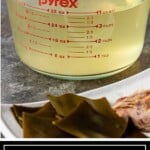












My go to recipe for when I make homemade miso soup!
Thanks Nate, I’m hoping you’re making my Miso soup?! 🙂
After reading this, I am really looking forward to your miso soup recipe. I just love it and we don’t much Japanese type food in the Caribbean, but we do get miso which is in my fridge now.
Sorry for the late reply as I have been over in Egypt researching new recipes to share here. Well surprise as the Miso Soup recipe came out today Cathy!